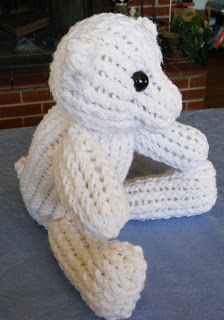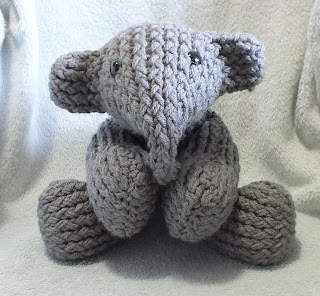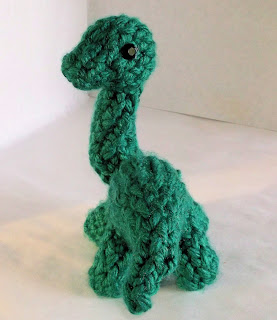The Loom Muse Talks Stuffed Animals
When creating stuffed animals there are a number of techniques that are great for creating stuffed animals without having to sew on smaller areas like snouts, ears, tails, and things alike. So below is an array of examples that follows the techniques that are useful in creating stuffed animals. Plus at the end of this blog will link all the CinDWood Looms that will work with all these projects!!!!Also feel free to take a look at my 5 part tutorial to help see a step by step in creating your own stuffed animals.
Short Rows
The first technique to keep in mind are your short rows, this is the process of knitting flat a certain number of pegs back and forth, this is creating an area that extends past the rest of the work. This is a great technique for ears, horns, legs, and tails. Plus if you incorporate my crocodile stitch you can create hair for manes and such. See the videos and examples below for this technique as an example.Wrap and Turns
When doing the wrap and turn technique which is exactly like working a heel in a sock. You knit to a point, and then wrap and turn the next peg, work over to the other side, then wrap and turn the next peg. This is worked flat, and in ways considered a short row but different. This techniques allow you room to add a curved back or add a belly. It creates a curve and change of angle. Examples below of uses of this technique.


Link for the Mummy Pattern.
Internal Decrease
This technique creates snouts and sinches a specific area. It means decreasing every other peg, and then knit or e-wrap the loops together, and then bring the loops side by side, and tighten your loops. This technique is also good for creating wings, and places in a body that need an indentions. Examples below.


Fox Pattern Link
Bat Pattern Link
Decreasing and Increasing
Decreasing as the ends of rows is important when narrowing down to a tail, and creating feet when working flat. Increasing by wrapping the next peg over, is important making width to a short row to widen a ear, or create a fin.
Peg Doubling
The technique of working 2 stitches seperately on 1 peg, which allows more stitches on a loom than there are pegs, and this can allow you to decrease later to keep working circularly to create a face with cheeks, or make a more ball like head.
Combo Techniques
Combinng Short Rows with Increasing can make a more shaped ear for rabbits, cows, and other animals where the ears are larger in the middle and long.
Safari Collection of Giraffe Lion Elephant and Monkey
Double E-Wrap
This technique is used for when you would like to stuff your animal firmer and puts the stitching tighter together. It is the object of having 2 layers of stitches on the pegs at all times, and with every fresh wrap only tossing the bottom loop over the top 2 loops.Gathering, and Draw String Cast On and Off
Gathering a cast on can create shape as well, when needing an indention without being able to do an Internal Decrease. This is as simples as weaving a needle through your cast on stitches and pulling the thread from the needle to a point that you get the shape you are after, then sewing it down to your other parts. Draw string cast on or off creates a closure with gathering as well.Turtle Pattern Link
Half Color Change
Bring the Original Loops Back
This technique is good to keep you from having to sew up small areas like smaller ears, tails, fingers, and other parts of animals. This works heavily with the Crocodile Stitch on the looms. It isn't necassary but it is great for those who hate sewing.Creating in One Piece
This is the ability to take most of these techniques and put them into one with as will sewing as possible. This is using things like, drawing string cast on, short rows, bring original loops back, wrap and turn, interenal decreasing, working from circular to flat, and draw string cast off. Check this examples out.Other Last Notes
Don't hesitate to use purls and knits together to create textures for the animal skin. Also for hair you can do a variety of techniques to create hair some are fast and or slower but you might need more or less depending on your project. Most of all play, use other pattern examples to create your own, have fun.Owl Pattern Link
Hello Kitty Pattern Link
































No comments:
Post a Comment